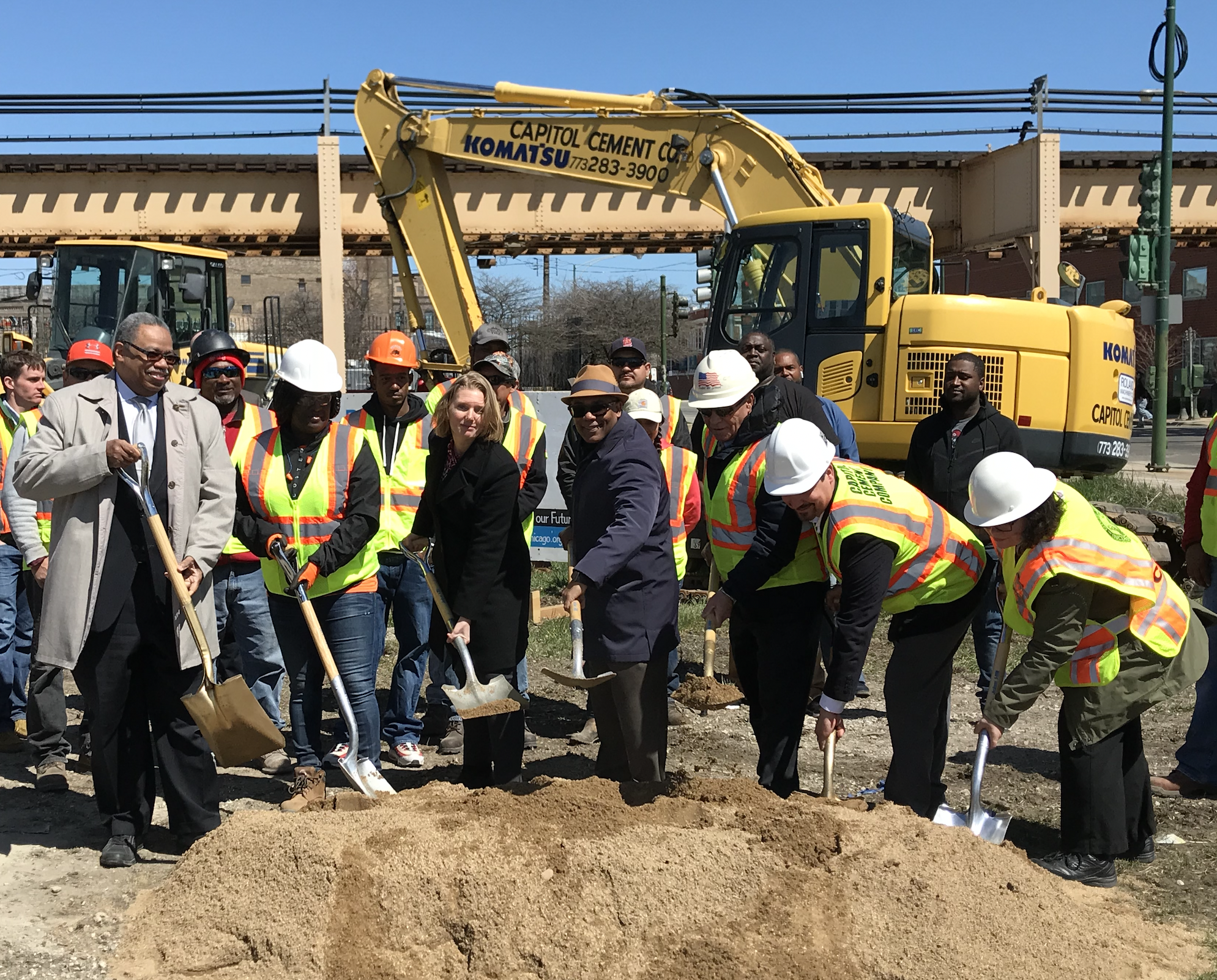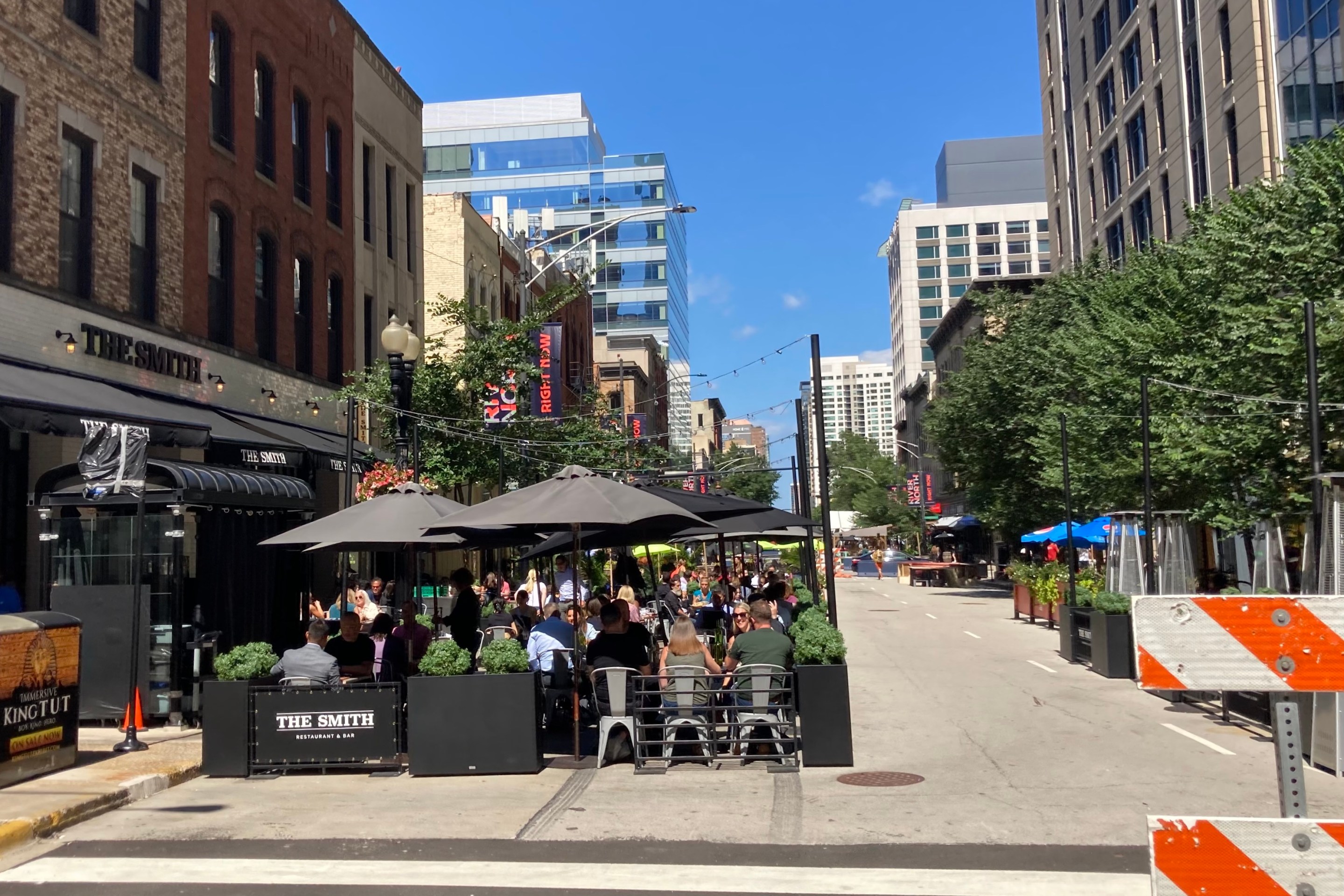New group Chicago, Bike Grid Now! pushes for network of traffic-calmed side streets
1:37 PM CDT on July 29, 2022
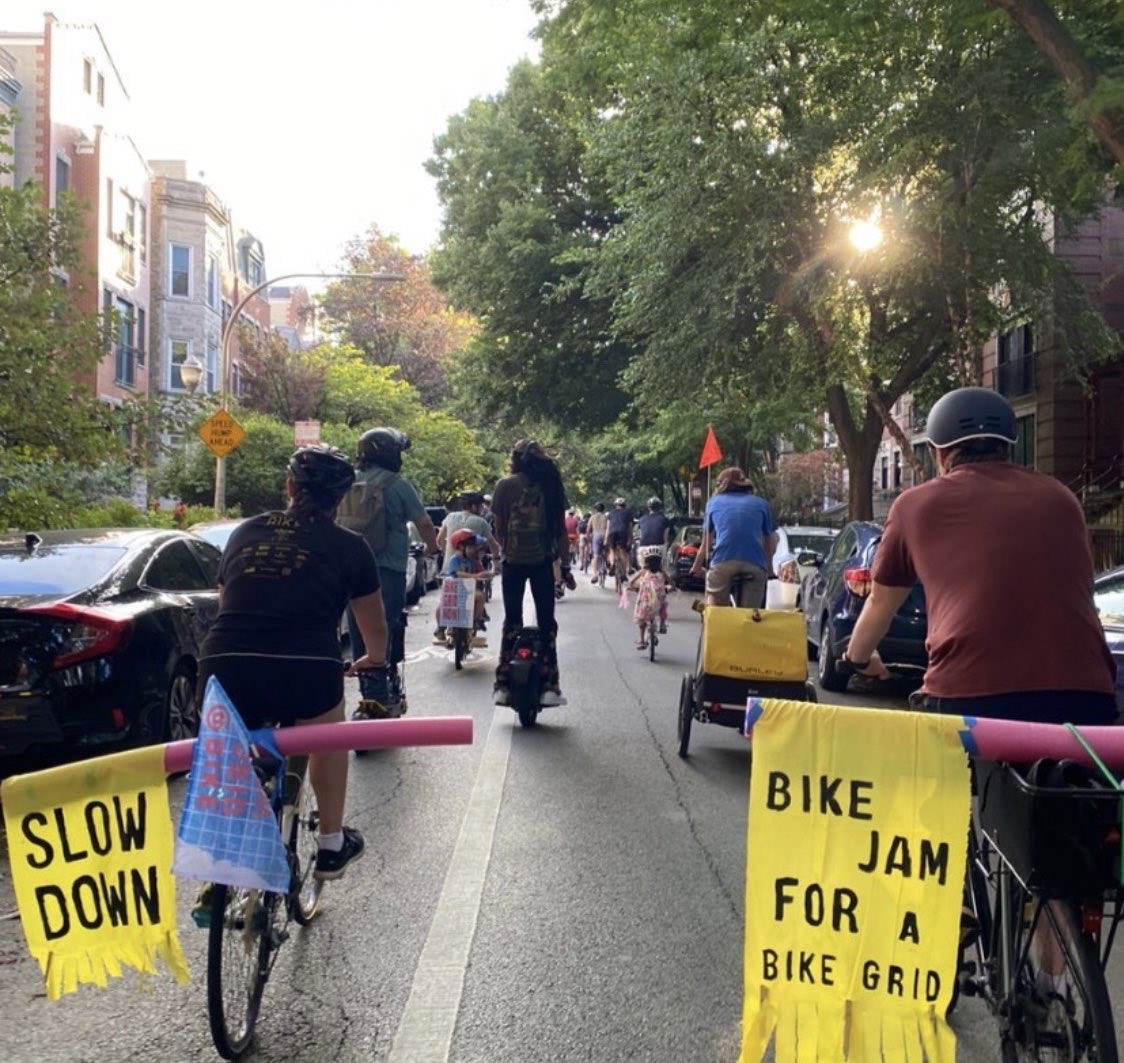
A recent Bike Jam ride in Lakeview. Photo: Rony Islam
In the past few months a new Chicago bike advocacy group has come on the scene: Chicago, Bike Grid Now! Given the state of Chicago’s streets, it makes sense to have multiple groups advocating for changes that will make our streets safer, more equitable, and more sustainable. I sat down with two of the lead organizers for Chicago, Bike Grid Now! Rony Islam and Carl Beien to learn more about the group.
Courtney Cobbs: I’ve been seeing photos from your bike jam rides all over Twitter every week. Can you tell me a bit about how Chicago Bike Grid came to be?
Rony Islam: Sure. I’m in a Facebook group called Lakefront for All which is dedicated to discussing how we can reconstruct our lakefront to center people as opposed to vehicles. I posted about the idea of a bike grid here in the city and our first bike jam and initially there were some people up in arms about the idea yet there were also some supporters. The creator and moderator of the group, Nate Hutcheson, was also very supportive and is now one of our organizers.
Carl Beien: Nate is also my neighbor. I really took notice of Rony’s very calm and grounded response to the detractors.
RI: We held our first bike jam about 9 or 10 weeks ago and that’s where we met another one of our now lead organizers, Emily Wilson. She also designs all of our flyers. We've had about 12 bike jams since.
CC: Were the goals/demands of Chicago Bike Grid Now! Ironed out at this first bike jam?
CB: Nate Hutchinson came up with “10% of city streets in a connected grid with a speed limit of 10mph.” [Think streets like Leavitt, Dorchester, or Wellington, city-owned and controlled streets]
The logic there is that changing the speed limit is free. It will of course take some time to figure out the specific streets but there isn’t a huge cost to getting new speed limit signs. There’s a different kind of political will to assign money and a deadline to construct a citywide network of protected bike lanes. These demands are in response to the difficulty in achieving a citywide network. With a grid you have built-in connectivity and with a lowered speed limit, there is less need for these huge infrastructure changes.
We’re aware that there will be a need to change state law and so we’re asking our supporters to connect to their aldermen about this issue. In our talks with State Senator Mike Simmons (7th District), he said he’s supportive of a lowered speed limit/ home rule when it comes to speed limits yet many Springfield reps would need to see support from Chicago elected officials.
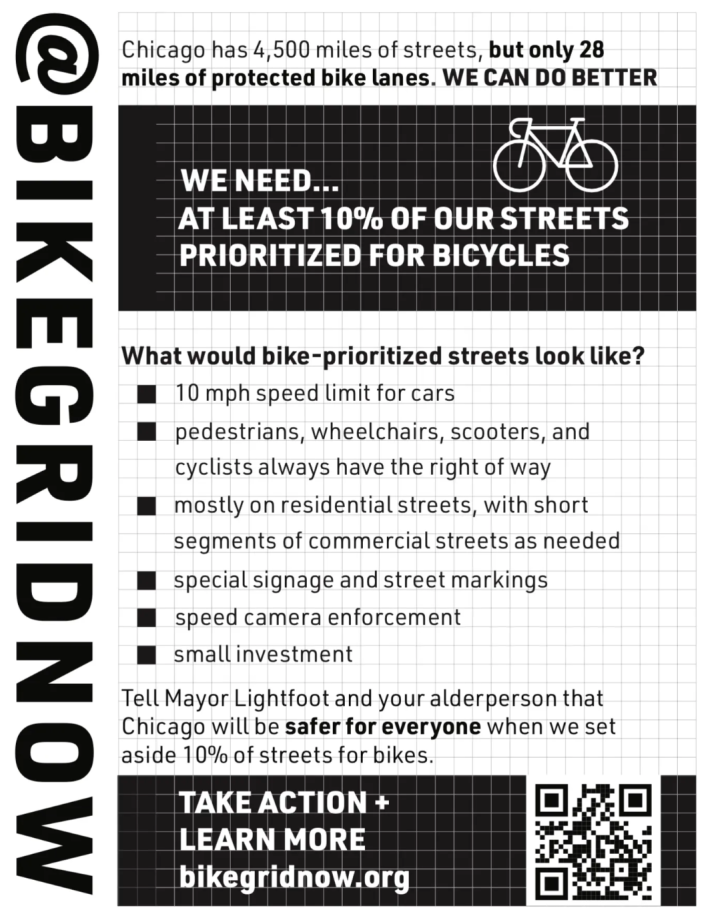
RI: There are two different paths to street safety right now: The Parisian approach of quick, easy, and temporary fixes that we can build off of and the Dutch approach of creating safe infrastructure whenever road resurfacing happens. We don’t have time to waste so both approaches are important but we believe the Parisian approach can get us where we want to be much sooner. We aren’t against a network of protected bike lanes; a bike grid is a complement to that.
CB: We would love to do Bike Jams in every neighborhood. In an ideal world we’d make connections with local cycling leaders in every neighborhood but so far that hasn’t happened. We’re very aware of the equity issues and the fact that most of the people who show up to our bike jams are white. At the end of the day, however, everyone deserves safe streets. With that in mind though, we aren’t going to helicopter down into Black and Brown neighborhoods and clog up traffic. That’s a pretty toxic approach. We try to recruit folks from our downtown rides to lead a ride in their neighborhood.
RI: We also try to recruit via social media. We tend to end a jam and plan for the next one. We’re in the process of scaling up and planning 4 bike jams out.
We then briefly discussed the “time tax” of being an advocate and how this might be playing a role in who can show up to be a street safety advocate. Rony mentioned the confusing nature of signing up for public comment at City Council and Committee meetings. We also discussed how arguments around gentrification and street safety infrastructure can sometimes miss the point that safe streets should be the defaut, not something that happens as a result of residents volunteering their time/labor or when it nicely fits into a new development. Additionally, strong interest in streets that allow for safe biking, walking, and neighborhood layouts that allow for easy car free travel should be an indicator to the city that this type of urban living should be available to more people. The city took a step forward closer to that goal with the Connected Communities Ordinance yet there’s still more work to do.
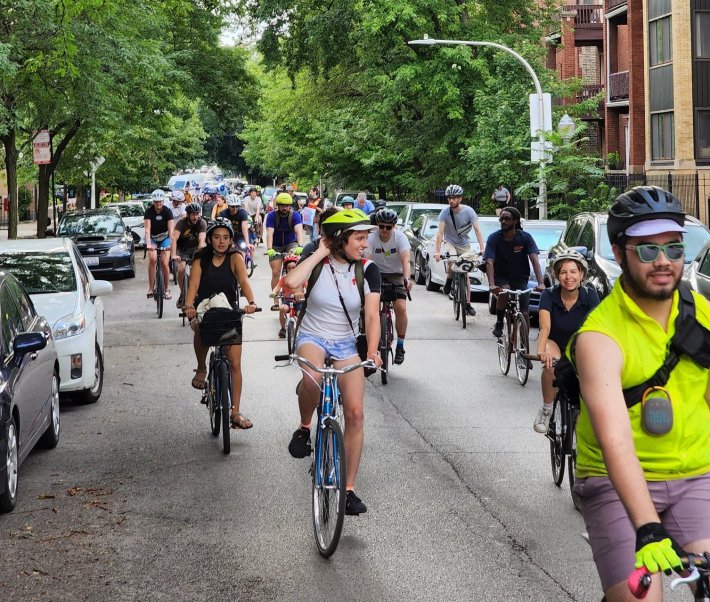
CB: Our bike jams have run the gamut: gnarly streets like Archer Avenue, Melrose up against the Dan Ryan, Broadway, and Sheridan and more calm side streets like Roscoe which allow people to slow down and kind of imagine how it could be better. I like experiencing both ends of a spectrum.
RI: Another important element of the bike grid is fixing the crossings at arterials.
CB: Correct. In thinking about Peter Paquette’s death. [A distracted driver fatally struck Paquette, 75, last month as he tried to cross Irving Park Road at Hoyne Avenue in North Center, an unsignalized intersection.] If there had been a traffic signal and a raised pedestrian crossing, it’s possible he would still be alive today.
Shifting the conversation a bit, if I had to do it over again I think “bike grid” is a bit problematic for me. In my mind a grid of safe streets is not necessarily a bike prioritized street. Roni, weren’t you just telling me about the-
RI: The [North American City Transportation Officials Urban Street Design] Guide
CB: Right, we’re able to point to the NACTO guide and say, “We want a network of shared streets.”
RI: NACTO calls for 10 mph on shared streets.
CB: There are cities within the U.S. and other countries that have lower speed limits for their residential streets. Asking for 10 percent of Chicago’s streets to have these slower speed limits isn’t that big of an ask.
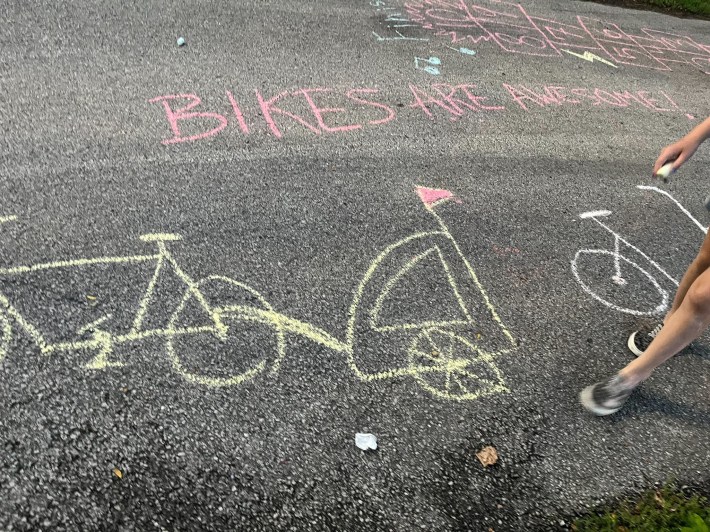
We then began discussing the need for visionaries in city government.
RI: When we were speaking earlier about “Why are we doing all this free work when there are people being paid to design our streets?”, I remember my experience having the opportunity to apply for work with the city of Atlanta around safe streets. I remember many of my mentors telling me not to apply for a job in city government because my ideas would be shot down and your career will die. So I didn’t do it.
We need visionaries and leaders at the top of the city who inspire people to work from the city to effect change in every direction. If Janette Sadik-Khan, former Commissioner of New York City Department of Transportation, called me up and offered me a job, even if it meant a 50-percent pay cut, I’d take it. She’s such a visionary and has effected change. I believe in her work and if I knew the work I was doing had support from the mayor and the commissioner, I’d be psyched. If Gia Biagi called me up and said “I’ll give you a job at 3x your current salary”, I would respond, “No thanks. I enjoy my sanity.”
CB: This reminds me of that meeting and I think we all know the one. [Carl is referring to CDOT’s Mobility Collaborative Meeting.] I couldn’t believe that they had convened over 100 advocates and we sat through a presentation about pre-fab concrete molds and how we need to think of the union worker. In those break out rooms we asked our moderator if he was trolling us. He asked, “What do you think people in your neighborhood would say if you told them streets should be slower?” What possible reason could you have for asking us that?! That meeting was so profoundly disappointing.
RI: I think the problem is that our city government is not for public good, it’s for electability.
CB: I see that with the aldermanic menu funds. I [submitted a Freedom of Information Act request for] the results of the last three years of the aldermanic menu funds.
CC: It went to the roads, right?
CB: 90 percent of it went to roads-street resurfacing. Unbelievable! We give all 50 alders a little over a million dollars and 90 percent of that $50 million+ dollars went to street resurfacing. That should be the Chicago Department of Transportation’s territory and why are we spending so much on car infrastructure? This just doubles down on our overcommitment to vehicle infrastructure.
CC: Especially when you consider how low the gas tax is. Most drivers are not paying for the damage they create. This is ignoring the climate impact, public health impact, etc.
RI: The average American household pays $1,200 a year for road infrastructure, regardless of whether or not they drive.
CB: It flew under the radar here in Illinois but the gas tax increase has been suspended. The gas tax here in Illinois is pegged to inflation so it should be rising. In the most recent state budget, the increase was suspended until the end of the year. I noticed this and called up my state rep, Senator Mike Simmons, and it took them a while to respond to me. When they initially responded they asked if my position was that people should be spending more on gas taxes. Nate Hutcheson eventually tracked him down and had a one-on-one. Simmons responded that the gas tax holiday was packaged within a set of other bills and he was voting for the overall package. It says a lot that even our most progressive reps still passively support gas tax holidays.
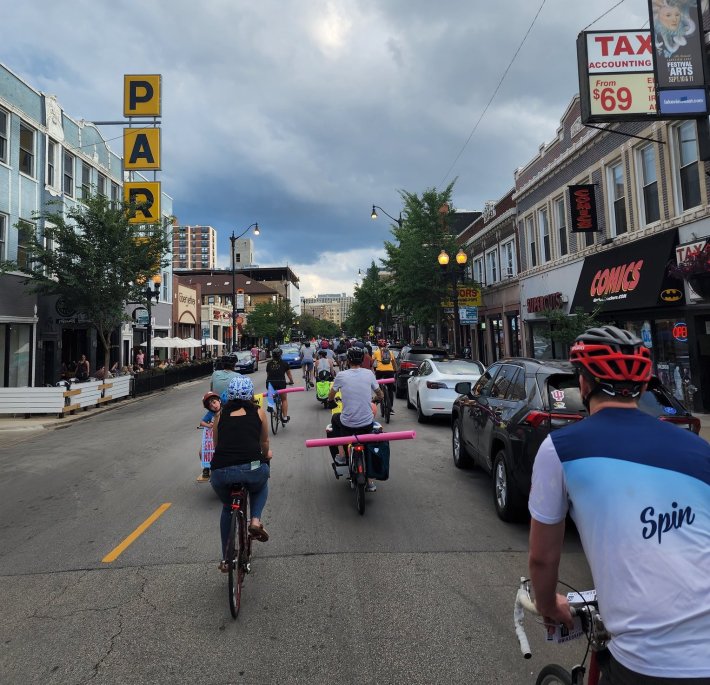
CC: I think given where we are in this moment, there’s an opportunity for some of the most progressive alders to really expose to the public where some of their colleagues stand. “If you really want to bring down traffic deaths, here’s a bill that can help us do that. Where do you stand?”
RI: Exactly! Mayor Lori Lightfoot asking where the cyclists are during the traffic cam vote really struck a chord with me. This shouldn’t be our jobs. However, many of us are doing some behind the scenes work. Chicago, Bike Grid Now! was able to connect with Byron Sigcho-Lopez in the 25th ward around his vote. Initially he was going to repeal the ordinance due to concerns about the fines impact on Black and Brown Chicagoans. Ultimately he was moved by the stats on who is typically impacted by traffic violence in this city.
We plan on sending out a candidate survey around traffic safety, bike infrastructure, and such to aldermanic and mayoral candidates. So far the earliest and strongest interest we’ve had has been from Kam Buckner. He came to one of our bike jams and came out with a platform around streets and street safety. We’re working with his campaign to organize some forums on street safety.
CC: I appreciate you both taking the time to speak with me. I’m excited to see another advocacy group in the city and I look forward to us working together more formally when an opportunity presents itself. There’s definitely room for more than one group, we need it. There’s a lane and a role for everyone.
RI: Even within the Chicago, Bike Grid Now! group, everyone has different strengths and backgrounds. We can’t all do it all. Someone asked us if we’re competing with Bike Lane Uprising and my response was, “Absolutely not!” [BLU founder Christina Whitehouse] has her own way of doing things and she’s impacting change. We have our strategy and we’re effecting change as well.
CB: There’s so much work to be done. As Nate has said, “If you see an angle that speaks to you, run with it!”
If you’d like to learn more about Chicago, Bike Grid Now!, check out their website and social media pages (Facebook, Instagram, Twitter) to stay updated on bike jams and other news updates.
Stay in touch
Sign up for our free newsletter
More from Streetsblog Chicago
Pressure is mounting to replace embattled CTA President Dorval Carter
Here's a look at what elected officials and other media outlets have said about the issue recently.
Service boost means BNSF Line will get Metra’s first-ever across-the-board weekend schedule, starting April 29
In addition, Halsted Street station will get weekend service, and Downers Grove's Fairview stop will become an off-peak stop.
Tasty news: Friedman Properties is trying to break the Clark outdoor dining stalemate by applying for street closure permits
Mayor Johnson's administration and Ald. Reilly haven't yet found common ground on bringing back the popular car-free zone. Will this make the difference?
